So far, all the tenses for which we have learned the conjugated forms have required that we remove the infinitive ending. That means that you must remove the ‐ar, ‐er, or ‐ir ending from the verb before adding the appropriate ending for the form and tense.
The future tense is unusual because the endings for each form are added to the entire infinitive. Because the entire infinitive is used, there is no need for three different conjugation charts for the three different kinds of infinitives (‐ar, ‐er, and ‐ir verbs). The verb endings in Table are added to the infinitive of any regular verb to create the future tense. The 12 verbs that are irregular in the future tense are presented in the next section, so for now, just remember to use the entire infinitive plus the endings in Table .
Irregular verbs
The good news is that the same endings used to create the future tense of regular verbs are used to create the future tense of irregular verbs. What makes a verb irregular in the future tense is that the infinitive must be changed before you add the future tense ending. There are only 12 basic verbs that are irregular in the future tense. The irregularities for the “dirty dozen” follow certain patterns that make them easier to memorize.
Five irregular verbs simply drop the e of the infinitive (see Table ).
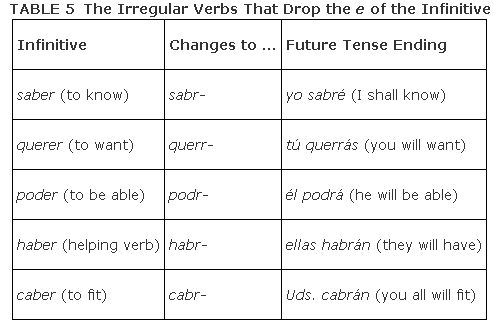
Most often, haber is conjugated to go with the subject and is used with a past participle to create the perfect tenses. Since you have just learned to conjugate haber in the future tense, you will be able to create the future perfect tense.
Five other irregulars change the last vowel of the infinitive to the letter d. These are called “ e to d, i to d oddities” and are shown in Tables and .
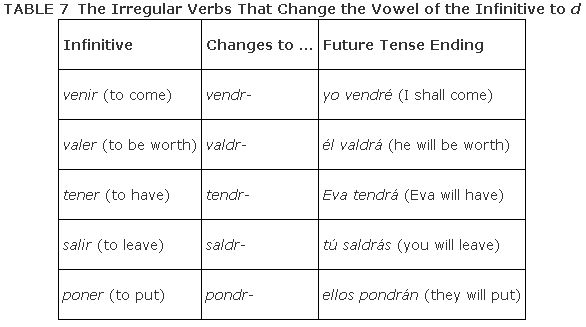
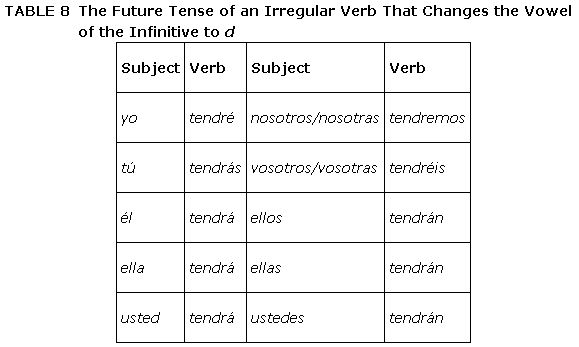
The final two verbs are irregular in the future tense because they drop the letters e and c from the infinitive. Notice in tables and that the e and c are not in the same order for both verbs:
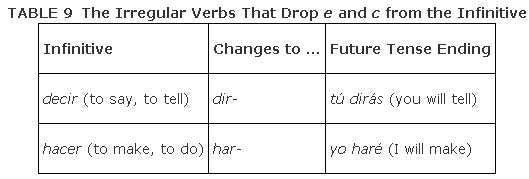
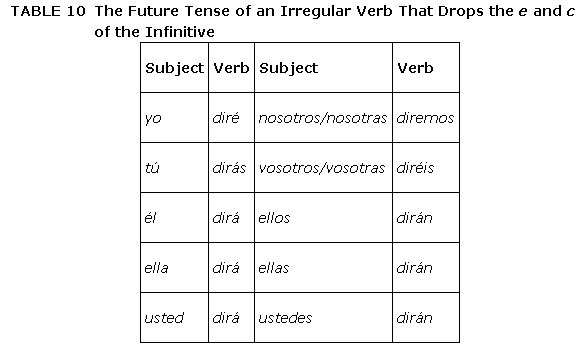
Don't forget that there are several verbs that add a prefix to a basic verb (see Table ). For example, the verb imponer is the verb poner with a prefix. These verbs are conjugated exactly like the basic verb without the prefix (but have a totally new meaning). The following verbs are irregular in the future tense because they are based on one of the “dirty dozen.”

Did you notice that most of the “ poner verbs” are easy to recognize if you change the n to s? For example, imponer means “to impose” and componer means “to compose.” Look at the conjugation chart in Table
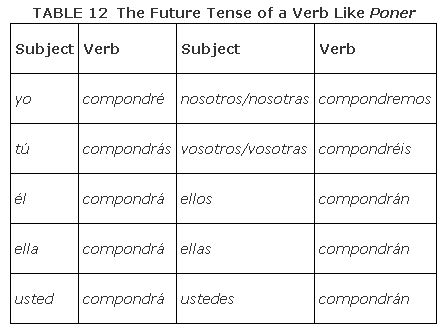
and you will notice that every form is exactly like the chart for poner except that the prefix com- has been added to the beginning of each form.
Note that not all the verbs that end like decir (see Table ) have the same conjugation endings of the “root verb” in the future tense. For example, bendecir, predecir, and maldecir are regular verbs in the future tense: bendeciré, predeciré, and maldeciré (see Table ).
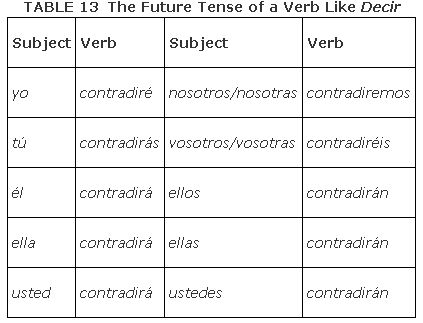

Verbs like tener will change the last vowel of the infinitive to the letter d. See Tables and
.

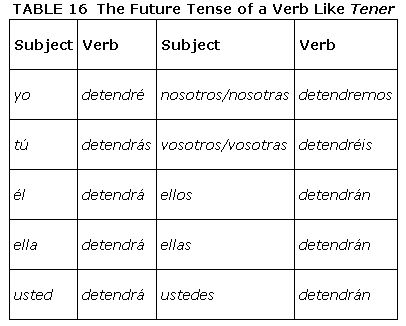
The verb satisfacer is always conjugated like hacer, so it will also be irregular in the future tense, as you can see in Tables and
.
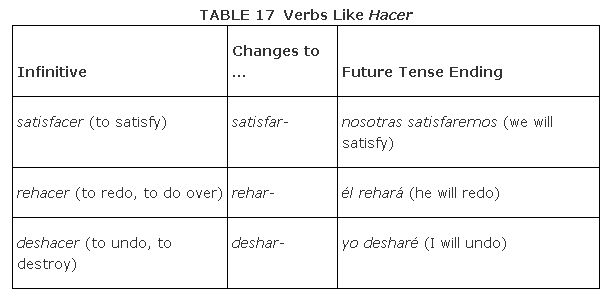
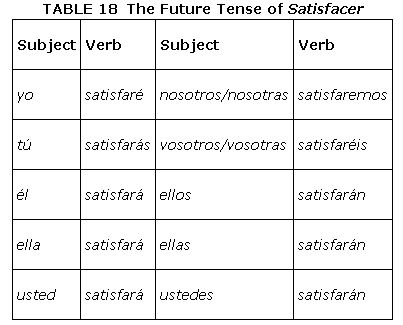
Although you might not be able to predict that satisfacer is conjugated like hacer, many other verbs are easy to predict. Any time you remove the first few letters and you find a verb that looks exactly like a verb you've learned, it will probably be conjugated like the verb you already know in all tenses and forms. For example, you can probably see that the verb proponer is conjugated like poner. If you've paid close attention, you can also predict that proponer means “to propose.” What would the yo form of the future tense of sobresalir be? Because the yo form of salir is saldré, the answer is sobresaldré. You can follow this same process for many other irregular verbs.
|
|
|
|
|
|
|
|
|
|
|
|
|
|
|
|
|
|
|
|
|
|
|
|
|
|
|
|
|
|
|
|
|
|
|
|
|
|
|
|
|